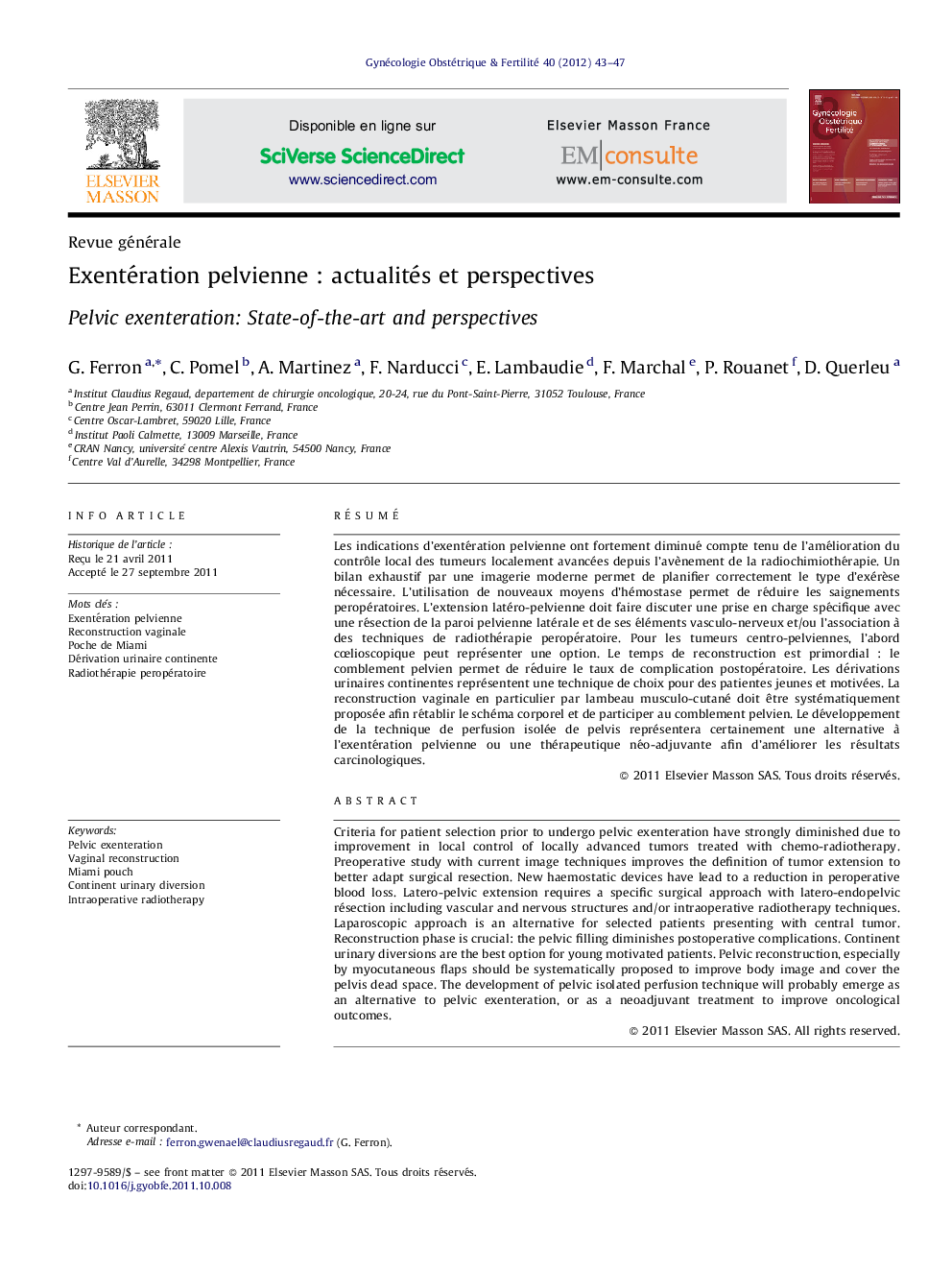| Article ID | Journal | Published Year | Pages | File Type |
|---|---|---|---|---|
| 3949277 | Gynécologie Obstétrique & Fertilité | 2012 | 5 Pages |
Abstract
Criteria for patient selection prior to undergo pelvic exenteration have strongly diminished due to improvement in local control of locally advanced tumors treated with chemo-radiotherapy. Preoperative study with current image techniques improves the definition of tumor extension to better adapt surgical resection. New haemostatic devices have lead to a reduction in peroperative blood loss. Latero-pelvic extension requires a specific surgical approach with latero-endopelvic résection including vascular and nervous structures and/or intraoperative radiotherapy techniques. Laparoscopic approach is an alternative for selected patients presenting with central tumor. Reconstruction phase is crucial: the pelvic filling diminishes postoperative complications. Continent urinary diversions are the best option for young motivated patients. Pelvic reconstruction, especially by myocutaneous flaps should be systematically proposed to improve body image and cover the pelvis dead space. The development of pelvic isolated perfusion technique will probably emerge as an alternative to pelvic exenteration, or as a neoadjuvant treatment to improve oncological outcomes.
Keywords
Related Topics
Health Sciences
Medicine and Dentistry
Obstetrics, Gynecology and Women's Health
Authors
G. Ferron, C. Pomel, A. Martinez, F. Narducci, E. Lambaudie, F. Marchal, P. Rouanet, D. Querleu,
